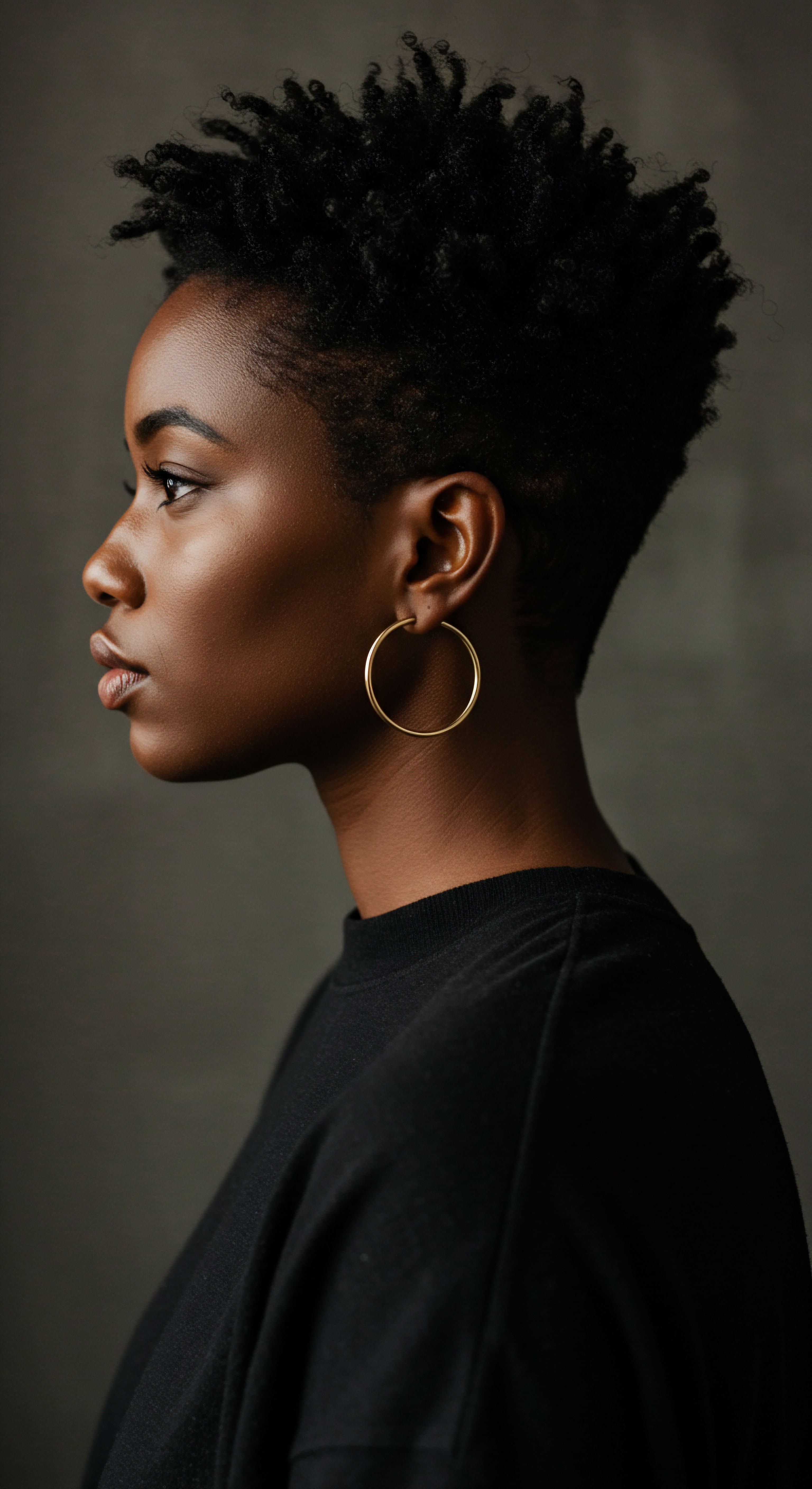
Roots
A quiet whisper, a gentle curl, a resilient coil—the strands that adorn our heads carry stories far older than memory. They speak of ancestry, of adaptation, and of an inherent beauty that has shaped traditions across continents. To truly appreciate the careful rituals passed down through generations for textured hair, one must first listen to the whispers of the hair itself, understanding its very being.
This means journeying into the hidden architecture of each strand, exploring the language of its curves, and recognizing the rhythms of its life. Only then can we begin to discern the profound scientific wisdom embedded within practices that may, at first glance, seem simply cultural.

The Microscopic World of a Textured Strand
Every single hair, regardless of its outward appearance, begins its life within a tiny pocket in the skin, the hair follicle. For those with textured hair, this follicle is not a straight tunnel but rather an elliptical or even kidney-bean shape, influencing the way the hair shaft emerges. As the hair grows, its cross-sectional shape mirrors that of its follicle, appearing more oval or flattened than the circular cross-section seen in straight hair.
This distinctive geometry plays a significant role in the hair’s mechanical properties. The very structure of the hair shaft, from its outermost protective layer to its innermost core, adapts to this curved path.
The hair shaft comprises three primary layers ❉ the cuticle, the cortex, and sometimes the medulla. The Cuticle, an outer protective shield, consists of overlapping, scale-like cells. In textured hair, these scales tend to lift slightly at the curves of the strand, which can render the hair more susceptible to moisture loss and mechanical friction. Beneath this shield lies the Cortex, the main body of the hair, composed of keratin proteins.
The arrangement and distribution of these proteins within the cortex, particularly the presence of different types of cortical cells (orthocortex and paracortex) in an uneven bilateral distribution, contribute to the hair’s natural curvature. This unevenness causes the hair to curl as it grows. The innermost layer, the Medulla, is a central canal that may be present or absent depending on hair thickness and type. These internal arrangements dictate how a strand behaves, how it interacts with moisture, and how it responds to external forces.

The Language of Loops and Coils
To speak of textured hair is to speak of a spectrum of magnificent forms, from gentle waves to tight, spring-like coils. Various classification systems have emerged to describe this diversity, often attempting to categorize curl patterns based on their diameter and shape. While no single system perfectly captures the infinite variations, they offer a helpful framework for discussing hair’s unique characteristics.
One common approach involves assigning numerical and alphabetical designations, such as 3A, 4B, or 4C. These classifications often correlate with the tightness of the curl, the diameter of the individual coil, and the hair’s tendency to shrink when dry. A scientific lens reveals that these visual distinctions are rooted in the hair’s microscopic architecture.
For instance, tighter coils often exhibit a more flattened elliptical cross-section and a greater degree of twisting along the shaft. This morphology, combined with the uneven distribution of keratin within the cortex, dictates the hair’s ability to retain moisture, its propensity for tangling, and its overall mechanical strength.
Understanding the inherent structural characteristics of textured hair is a foundational step in appreciating its care requirements.
The scientific community continues to refine its understanding of hair classification, moving beyond simple visual assessment to consider biomechanical properties. The challenge remains in developing a universally applicable system that accounts for the immense variability not only between different hair types but also within a single head of hair.
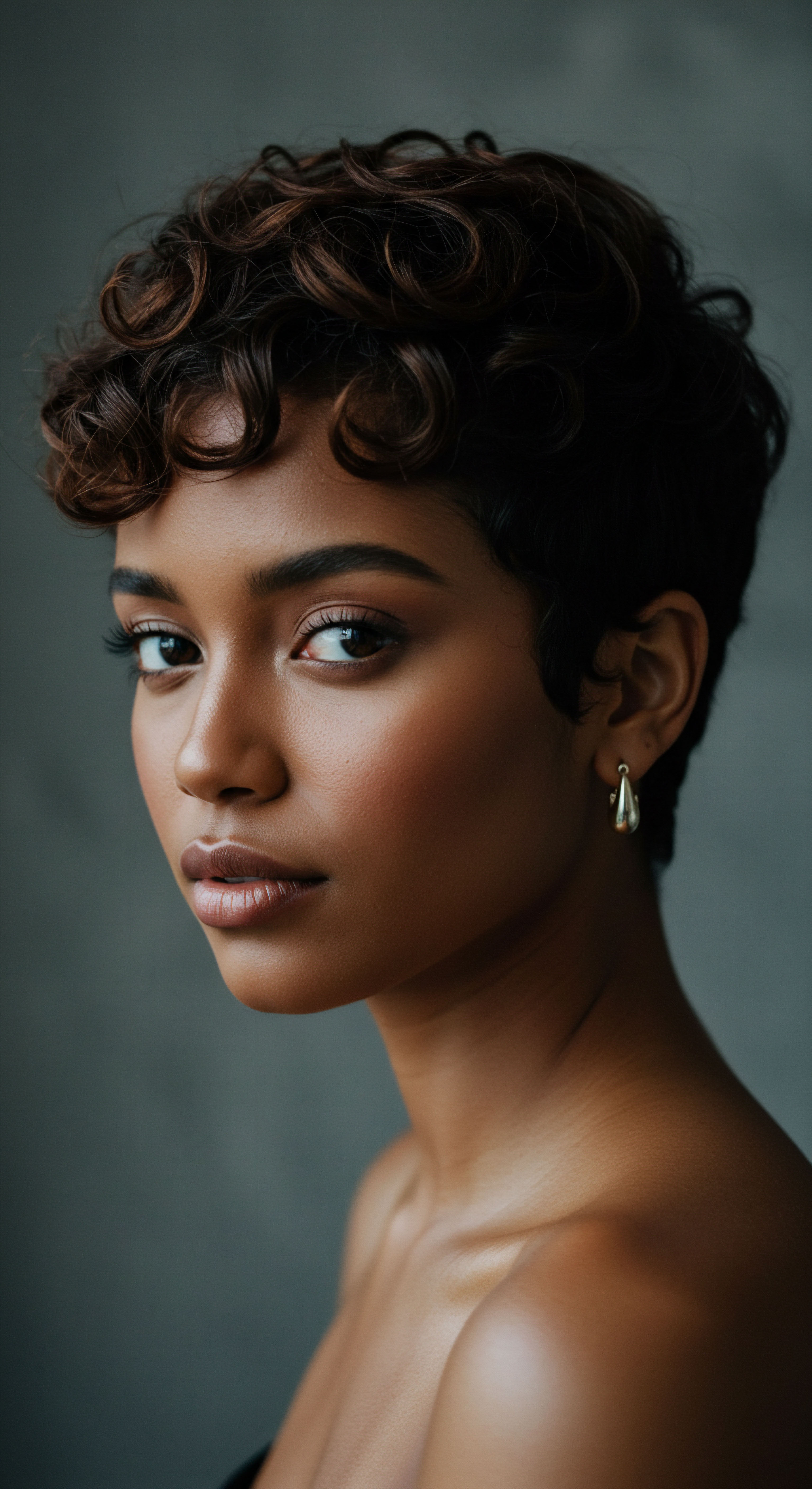
Hair’s Life Cycle and Influencing Factors
Hair growth follows a cyclical pattern, an intricate dance of cellular activity that determines the length and density of our strands. This cycle comprises three main phases:
- Anagen ❉ The active growth phase, lasting from two to seven years, during which hair cells rapidly divide and new hair forms.
- Catagen ❉ A transitional phase, lasting a few weeks, where hair growth ceases and the follicle shrinks.
- Telogen ❉ The resting phase, lasting a few months, after which the old hair sheds and a new anagen hair begins to grow.
While the basic cycle remains consistent across hair types, factors such as genetics, nutrition, hormonal balance, and environmental stressors can significantly influence its duration and efficiency. For textured hair, which often grows from a curved follicle, the physical stress placed on the hair during styling or manipulation can impact the anagen phase, potentially leading to premature breakage if not handled with gentleness. The density of hair, or the number of hairs per square centimeter of scalp, also plays a role in how full the hair appears and how it responds to various care methods.
| Hair Component Hair Follicle |
| Description A tube-like structure in the skin from which hair grows. |
| Relevance to Textured Hair Elliptical or kidney-bean shape dictates curl pattern. |
| Hair Component Cuticle |
| Description Outermost protective layer of overlapping scales. |
| Relevance to Textured Hair Scales tend to lift at curves, affecting moisture retention and susceptibility to friction. |
| Hair Component Cortex |
| Description The main body of the hair, composed of keratin proteins. |
| Relevance to Textured Hair Uneven distribution of keratin types contributes to natural curl. |
| Hair Component Medulla |
| Description Innermost core, often absent in fine hair. |
| Relevance to Textured Hair Presence or absence influences hair thickness and strength. |
| Hair Component The unique morphology of textured hair at a microscopic level underpins its distinct care requirements. |
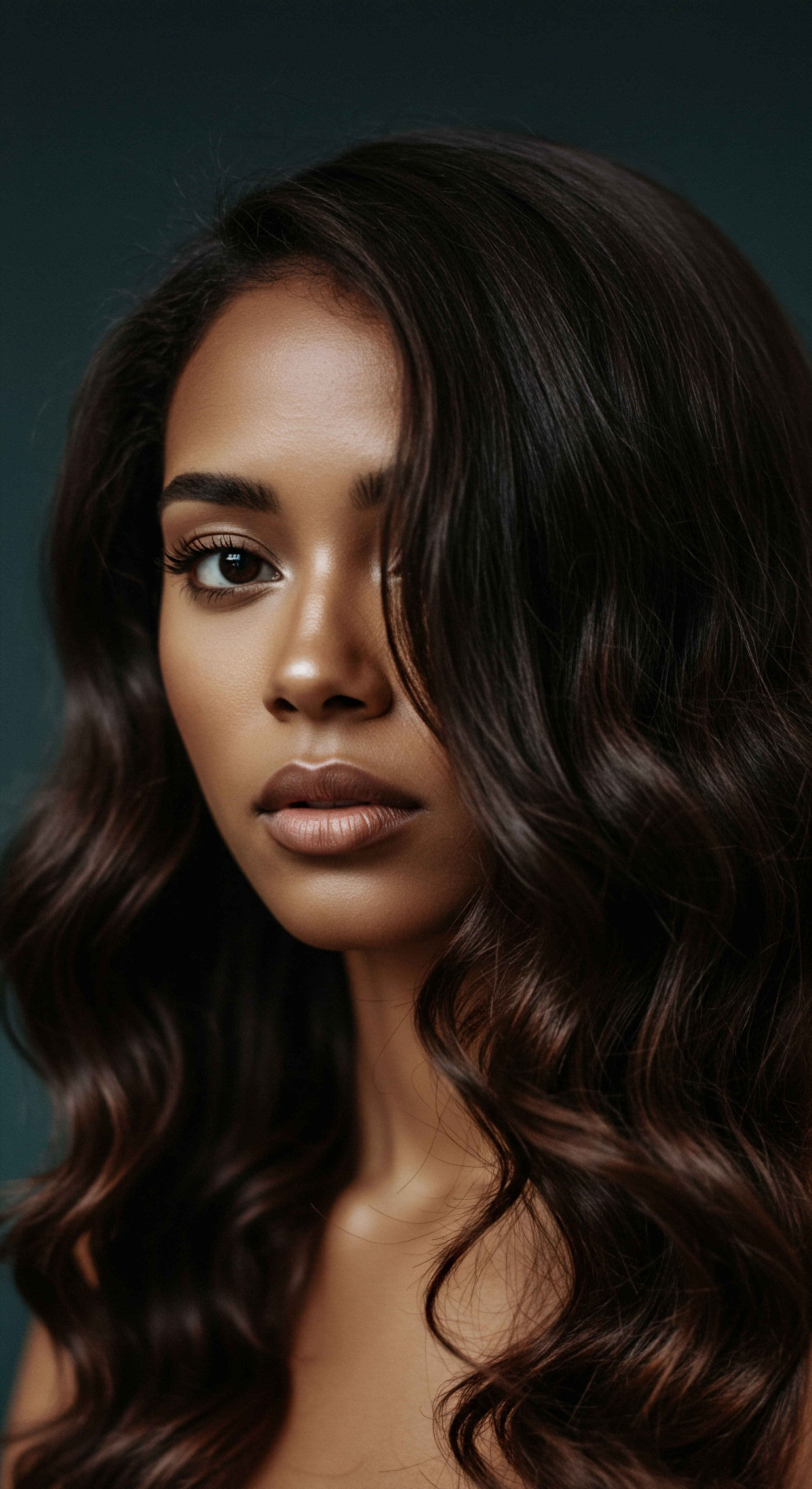
Ritual
Having journeyed through the unseen landscape of the hair strand, we arrive at the practical expressions of its care ❉ the rituals. These are not merely rote actions but thoughtful applications of knowledge, often passed down through families and communities, that respond directly to the inherent qualities of textured hair. From the gentle art of cleansing to the patient practice of detangling, each step in a traditional hair care regimen holds a scientific resonance, a quiet understanding of how to honor and sustain these unique curls and coils. We seek here to illuminate the practical wisdom within these practices, moving beyond simple instructions to grasp the deeper ‘why’ behind them.

The Art of Cleansing ❉ Beyond Just Washing
Traditional textured hair care often emphasizes gentle cleansing, sometimes less frequently than other hair types, and with formulations that respect the hair’s moisture balance. This approach is rooted in the scientific understanding of surfactants—the cleansing agents in shampoos. While effective at removing dirt and excess oil, some harsher surfactants can strip the hair of its natural lipids, leading to dryness and increased susceptibility to breakage. Textured hair, with its raised cuticles and inherent tendency towards dryness, is particularly vulnerable to this stripping effect.
Many traditional practices favored cleansing agents derived from natural sources, such as saponins from plants, which often possess milder cleansing properties. The scientific basis here lies in the chemical structure of these compounds, which allow for effective removal of impurities without excessive disruption of the hair’s protective lipid barrier. Modern formulations often mimic this gentleness by using milder surfactants or by incorporating moisturizing agents to counterbalance the cleansing action. The deliberate choice of cleansing method, whether it is a full shampoo, a co-wash, or a gentle rinse, directly influences the hair’s cuticle layer and its overall hydration state.

Hydration’s Deep Embrace ❉ Why Moisture Matters?
The consistent application of moisture is a cornerstone of textured hair care, a practice that echoes a profound scientific need. The helical shape of textured hair makes it more challenging for natural scalp oils (sebum) to travel down the hair shaft, leaving the ends particularly vulnerable to dryness. Additionally, the slightly lifted cuticle scales, characteristic of coiled hair, allow moisture to escape more readily than in straight hair.
Traditional practices often relied on rich plant-based oils and butters, such as shea butter, cocoa butter, or coconut oil. Scientifically, these ingredients function as Emollients, which soften and smooth the hair by filling gaps in the cuticle, and as Occlusives, which form a protective barrier on the hair surface to prevent water loss. Humectants, such as glycerin or honey (often found in traditional preparations), draw moisture from the air into the hair, further enhancing hydration. The layering of these products, often known as the LOC (Liquid, Oil, Cream) or LCO method, is a practical application of these scientific principles, designed to seal moisture into the hair shaft effectively.
Hydration is the lifeblood of textured hair, sustained by practices that lock in moisture and guard against environmental drying.

Protective Styling ❉ A Shield Against Stress
Protective styling, such as braids, twists, or buns, is a widely practiced technique in textured hair communities. Its scientific basis lies in minimizing mechanical stress and environmental exposure to the delicate hair strands. By tucking away the hair ends, which are the oldest and most fragile parts of the hair shaft, these styles reduce friction from clothing, reduce tangling, and limit exposure to drying air and environmental pollutants.
The physics of protective styling involves reducing the frequency of manipulation, thereby decreasing the likelihood of breakage caused by combing, brushing, or excessive styling. Tension, when applied correctly, helps maintain the integrity of the style without stressing the hair follicle or shaft. Overly tight styles, however, can lead to traction alopecia, a condition where continuous pulling on the hair follicles causes damage and hair loss. This highlights the delicate balance between protection and excessive tension, a balance often intuitively understood and practiced within traditional styling methods.

Detangling’s Delicate Dance ❉ Preserving Strand Integrity
Detangling is a meticulous ritual for textured hair, often performed with fingers or wide-tooth combs on damp, conditioned strands. The scientific reason for this careful approach is the inherent propensity of textured hair to knot and tangle. The curves and coils of individual strands can interlock with one another, creating knots that, if forcefully removed, can lead to significant breakage.
Applying conditioner before detangling serves a crucial scientific purpose. Conditioners contain cationic surfactants that bind to the negatively charged surface of the hair, smoothing the cuticle scales and reducing friction between strands. This lubrication allows the hair to glide past itself more easily, minimizing the force required to separate knots.
Detangling hair when it is damp also reduces its elasticity, making it less prone to stretching and snapping compared to dry detangling. The patience and methodical nature of traditional detangling methods are direct responses to the hair’s structural vulnerabilities, aiming to preserve each strand’s integrity.
| Technique Co-Washing |
| Scientific Principle Uses conditioners with mild surfactants to cleanse without stripping. |
| Benefit for Textured Hair Maintains natural moisture, reduces dryness and breakage. |
| Technique Pre-Poo Treatments |
| Scientific Principle Applying oils/conditioners before shampooing to protect hair. |
| Benefit for Textured Hair Reduces hygral fatigue (damage from swelling/shrinking with water). |
| Technique Protective Styling |
| Scientific Principle Braids, twists, buns that tuck away hair ends. |
| Benefit for Textured Hair Minimizes mechanical friction, environmental exposure, and breakage. |
| Technique Finger Detangling |
| Scientific Principle Using fingers to separate strands gently. |
| Benefit for Textured Hair Reduces mechanical stress and preserves delicate curl patterns. |
| Technique Traditional practices often intuitively align with scientific principles for optimal textured hair health. |

Relay
As we delve deeper into the wisdom of textured hair care, we encounter a profound relay of knowledge, a dialogue between ancient practices and contemporary scientific discovery. This is where the rich tapestry of cultural heritage meets the precise lens of modern chemistry and biology, revealing how ancestral methods often anticipated scientific truths. Here, we explore the intricate connections that bind traditional care to the very cellular and environmental factors that shape hair’s vitality.

Ancestral Wisdom and Modern Chemistry ❉ A Symbiotic Relationship
Many traditional textured hair care regimens feature ingredients sourced directly from nature ❉ plant oils, butters, herbs, and clays. For generations, their efficacy was known through observation and experience. Today, scientific analysis validates much of this ancestral wisdom.
For example, Shea Butter (Butyrospermum parkii), a staple in many African hair traditions, is rich in fatty acids like oleic and stearic acids, which are known emollients that provide conditioning and occlusive properties, forming a barrier to reduce water loss from the hair shaft. Coconut Oil (Cocos nucifera), another widely used ingredient, has a unique molecular structure that allows it to penetrate the hair shaft, reducing protein loss during washing.
Beyond simple conditioning, certain plant extracts used traditionally possess specific biochemical properties. For instance, some plants traditionally used for hair growth or scalp health contain compounds that exhibit anti-inflammatory, antimicrobial, or antioxidant activity. An ethnobotanical survey conducted in Northern Morocco documented the traditional use of plants like Lawsonia Inermis (Henna) for strengthening and revitalizing hair, and Origanum Compactum for fortifying and coloring.
These plants contain compounds like lawsone (in henna) which binds to keratin, and various phenols (in oregano) with known antioxidant properties. Such studies demonstrate a compelling alignment between time-honored practices and the chemical realities of plant-derived ingredients.

The Scalp’s Silent Symphony ❉ A Microbial Community
Traditional hair care often placed significant emphasis on scalp health, a concept now strongly supported by emerging research into the scalp microbiome. The scalp, like the skin elsewhere on the body, hosts a diverse community of microorganisms—bacteria, fungi, and viruses—that coexist in a delicate balance. A healthy scalp microbiome contributes to the skin barrier function, helps regulate sebum production, and can even influence hair growth and texture.
Disruptions to this microbial balance, known as dysbiosis, can lead to common scalp conditions such as dandruff, itching, and inflammation. Traditional practices that involve gentle cleansing, regular oiling, and the use of herbal rinses may have intuitively supported a balanced scalp environment. For example, the use of certain plant extracts with mild antiseptic properties could help maintain a healthy microbial population without stripping the scalp’s natural defenses. Recent research highlights the link between an unbalanced scalp microbiome and conditions like dandruff, suggesting that maintaining a healthy microbial ecosystem is indeed a pathway to overall hair vitality.
The delicate balance of the scalp’s microbial community, nurtured by traditional methods, plays a critical role in hair health.

Environmental Echoes ❉ Hair’s External Challenges
Hair is constantly exposed to environmental stressors that can compromise its structure and appearance. Sunlight, particularly UV radiation, can degrade hair proteins and pigments, leading to dryness, brittleness, and color fading. Pollution, in the form of particulate matter, can adhere to the hair surface and even penetrate follicles, affecting growth and texture, making hair rough and dull. Humidity also plays a significant role; while textured hair requires moisture, excessive humidity can cause the hair shaft to swell and shrink repeatedly, leading to hygral fatigue and potential damage.
Traditional protective styling techniques, such as braids, twists, and head coverings, offered an inherent defense against these environmental assaults. By reducing direct exposure to sun and pollutants, these practices acted as physical barriers, minimizing the damage caused by external aggressors. This preventative approach, a hallmark of many traditional hair care philosophies, aligns perfectly with modern dermatological advice on minimizing environmental hair damage.
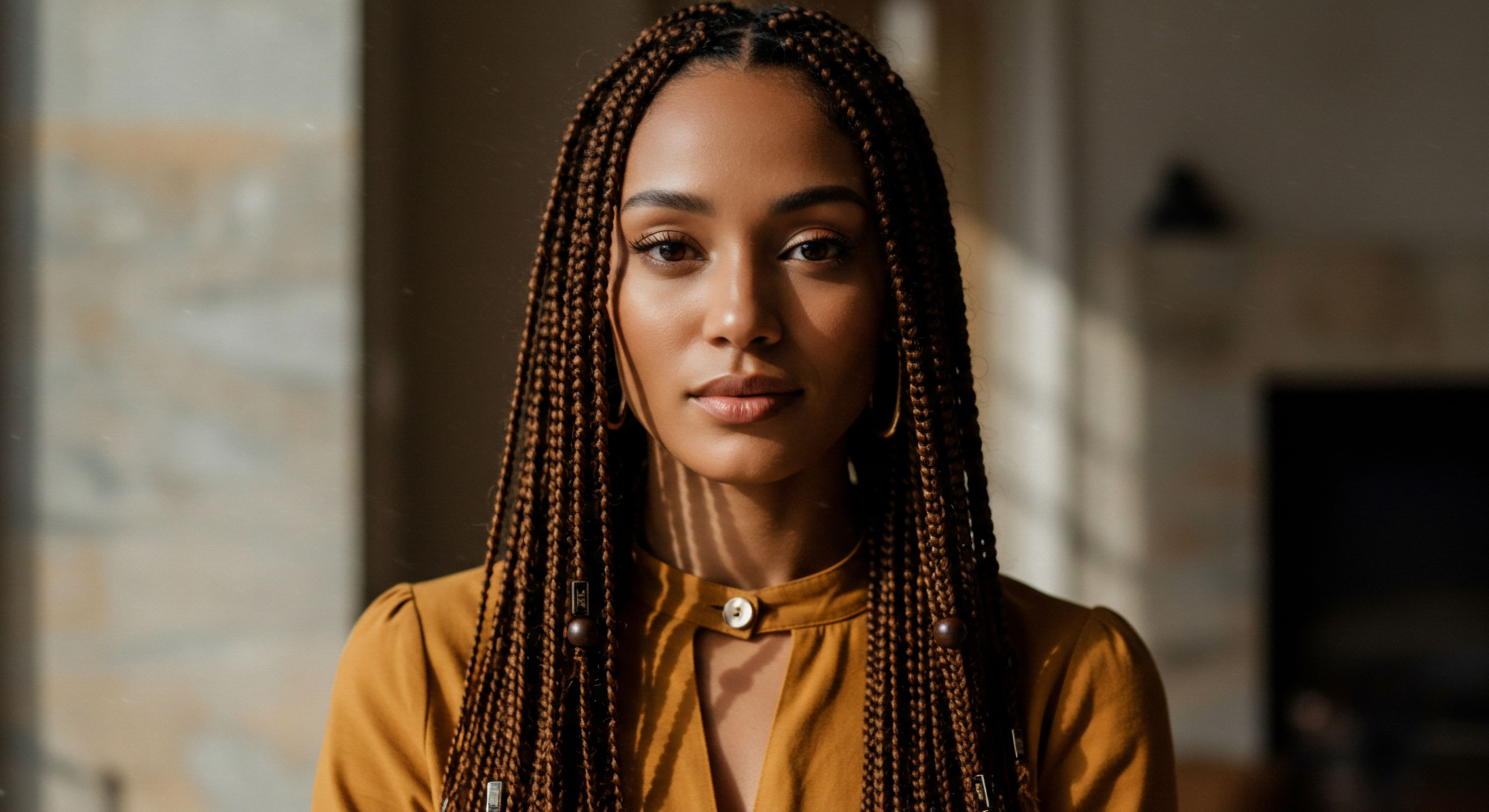
Beyond the Strand ❉ Systemic Influences on Hair Vitality
Traditional wisdom often views hair health not in isolation but as a reflection of overall bodily well-being. This holistic perspective finds strong resonance in modern scientific understanding. Nutritional deficiencies, for instance, can profoundly impact hair growth and structure.
Proteins, vitamins (especially B vitamins like biotin), and minerals (like iron and zinc) are essential building blocks for healthy hair. A diet rich in diverse whole foods, a common feature of many traditional culinary practices, would naturally provide these necessary nutrients.
Stress, too, has a well-documented impact on hair. Chronic stress can disrupt the hair growth cycle, leading to increased shedding. Hormonal fluctuations, influenced by diet, stress, and life stages, also play a significant role in hair density and texture. Traditional practices often included elements of self-care and community rituals that, while not explicitly scientific, contributed to overall well-being, indirectly supporting hair health by reducing stress and promoting internal balance.

Does Hair Texture Affect Breakage Susceptibility?
A particularly compelling scientific basis for traditional textured hair care lies in the inherent mechanical properties of highly coiled hair. Research indicates that the unique geometry of tightly coiled hair, characterized by its elliptical cross-section and frequent twists along the shaft, renders it more susceptible to breakage than straighter hair. Studies show that curly hair fibers exhibit a different viscoelastic character and are less resistant to stretching compared to straight hair. This is not to say that textured hair is inherently “weak,” but rather that its structure concentrates stress at specific points during manipulation, making it prone to fracture.
For instance, a study published in the Journal of the American Academy of Dermatology noted that African-American hair is more prone to premature fracturing during tensile experiments, with cracks forming in the cell membrane complex between cortical cells. This structural reality provides a clear scientific rationale for the gentle, low-manipulation techniques central to traditional textured hair care. Practices like finger detangling, protective styling, and minimizing heat are not simply preferences; they are direct responses to the biomechanical vulnerabilities of coiled hair, aiming to reduce the physical forces that lead to breakage. This deep understanding of hair’s delicate nature, often arrived at through generations of observation and adaptation, is perhaps the most profound scientific basis for traditional care.
| Traditional Practice Use of Plant Oils/Butters |
| Scientific Connection Rich in emollients and occlusives for moisture retention. |
| Research Validation Analysis of fatty acid profiles and penetration properties. |
| Traditional Practice Emphasis on Scalp Care |
| Scientific Connection Supports a balanced scalp microbiome for healthy hair growth. |
| Research Validation Studies on microbial communities and their link to scalp conditions. |
| Traditional Practice Protective Styling |
| Scientific Connection Minimizes mechanical stress and environmental damage. |
| Research Validation Biomechanical studies on hair breakage and environmental impact assessments. |
| Traditional Practice Traditional methods often intuitively address hair's scientific needs, predating formal research. |

Reflection
To consider the scientific underpinnings of traditional textured hair care is to stand at a beautiful crossroads, where ancestral wisdom meets the clarity of modern inquiry. It reveals that the practices passed down through generations are not simply matters of aesthetic preference or cultural expression, but rather deeply informed responses to the unique biological and environmental realities of textured hair. This journey into the hair’s very structure, its response to moisture, and its delicate balance with its environment, illuminates a profound respect for nature’s design. As we continue to seek understanding, we discover that the gentle touch, the patient hand, and the mindful application of natural gifts have always been, and remain, the truest science of care.
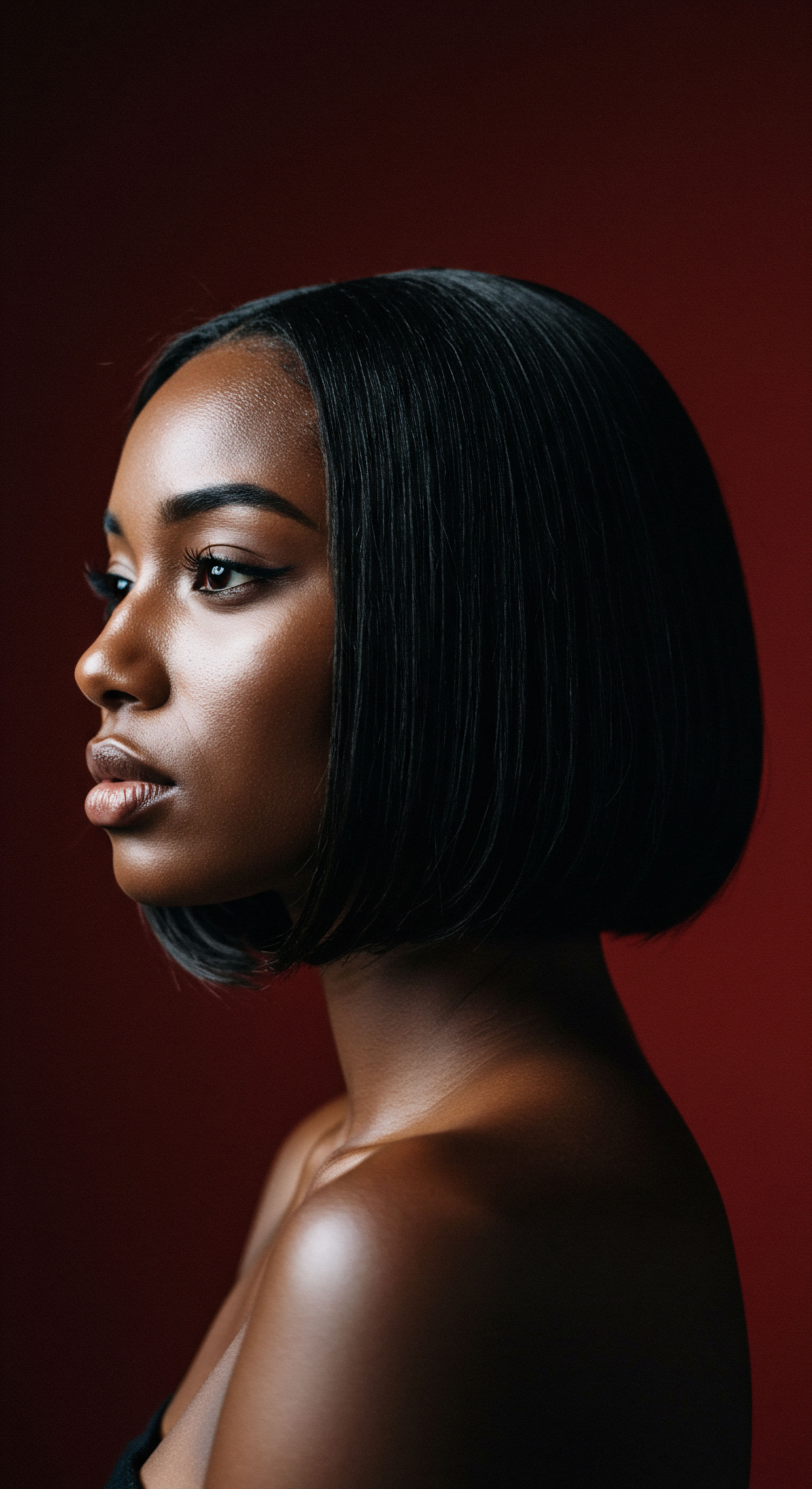
References
- Ng’oepe, M. et al. “Understanding Curly Hair Mechanics ❉ Fiber Strength.” Journal of Investigative Dermatology, 2019.
- Davis-Sivasothy, Audrey. “The Science of Black Hair ❉ A Comprehensive Guide to Textured Hair Care.” Saja Publishing, 2011.
- Zülli, F. “Scalp microbiome focus.” Personal Care Insights, 2021.
- An’du. “10 Reasons Why You Want a Healthy Scalp Microbiome.” An’du Blog, 2025.
- Milbon Co. Ltd. “Milbon Finds Curly Hair Has Weak Cuticle Adhesion and Low Hair Strength.” Milbon Official Website, 2024.
- Kowalski, Kathiann. “Science works to demystify hair and help it behave.” Science News Explores, 2024.
- Smith, J. D. B. “The Biomechanics of Human Hair.” International Journal of Cosmetic Science, 2003.
- Lasisi, Tina. “Curly hair kept early humans cool.” Proceedings of the National Academy of Sciences, 2023.
- Dias, M. F. R. G. “Defying Damage ❉ Understanding Breakage in Afro-textured Hair.” Cosmetics & Toiletries, 2020.
- Loussouarn, G. “African hair ❉ a specific morphological and biochemical characterization.” International Journal of Dermatology, 2001.
- Wolfram, L. J. and Schwan, H. R. “Mechanical properties of human hair ❉ Effect of various chemical treatments.” Journal of the Society of Cosmetic Chemists, 1965.
- Nkomo, R. et al. “Weekly hair washing ❉ The recommended solution for women with afro-textured hair to alleviate dandruff and scalp discomfort.” Journal of Dermatology, 2024.
- Centre Clauderer. “Scalp microbiome ❉ why it’s essential for healthy hair.” Centre Clauderer Blog, 2025.
- Kérastase. “Your Scalp Microbiome Is the Secret to Healthy Beautiful Hair.” Kérastase Official Website, 2024.
- Milady. “Milady Standard Natural Hair Care and Braiding.” Cengage Learning, 2013.
- Gullette, Shawon. “Hormones & Hairloss.” Dayton’s Trichology Hair Loss Control Clinic, 2023.
- Chandrashekar, B. S. “IADVL Textbook of Trichology.” JP Medical Ltd, 2022.
- Mouchane, M. et al. “Ethnobotanical Survey of Medicinal Plants used in the Treatment and Care of Hair in Karia ba Mohamed (Northern Morocco).” Journal of Medicinal Plants and By-Products, 2023.
- Oloyede, Kemi. “Environmental Consequences of Synthetic Hair Use from a Black British Perspective (and some eco-friendly alternatives).” ACS ES&T Water, 2025.
- Horev, Liran. “Environmental and cosmetic factors in hair loss and destruction.” Current Problems in Dermatology, 2007.
- James, Penny. “Waves, Curls, and Coils ❉ Understanding Curly Hair Types from a Trichologist.” Penny James Trichology Center Blog, 2023.
- NYSCC. “Impact of Environmental Stressors on Hair.” NYSCC News, 2021.
- Smith, J. D. B. and Smith, R. S. L. “Fracture properties of human hair.” Journal of Materials Science, 2003.
- Osei-Dankwah, E. et al. “The Genomic Variation in Textured Hair ❉ Implications in Developing a Holistic Hair Care Routine.” Cosmetics, 2023.
- Mouchane, M. et al. “Ethnobotanical Survey of Medicinal Plants used in the Treatment and Care of Hair in Karia ba Mohamed (Northern Morocco).” ResearchGate, 2024.
- Obajuluwa, A. O. et al. “Cosmetopoeia of African Plants in Hair Treatment and Care ❉ Topical Nutrition and the Antidiabetic Connection?” MDPI, 2023.
- Loussouarn, G. et al. “Understanding breakage in curly hair.” International Journal of Cosmetic Science, 2005.
- Yılmaz, S. et al. “Biomechanical properties of human hair with different parameters.” ResearchGate, 2024.
- Mouchane, M. et al. “Ethnobotanical Survey of Medicinal Plants used in the Treatment and Care of Hair in Karia ba Mohamed (Northern Morocco).” ResearchGate, 2024.
- Sultan, S. et al. “Ethnobotany of traditional cosmetics among the Oromo women in Madda Walabu District, Bale Zone, Southeastern Ethiopia.” PubMed Central, 2024.
- Davis-Sivasothy, Audrey. “The Science of Black Hair ❉ A Comprehensive Guide to Textured Hair.” Google Books, 2011.
- Davis-Sivasothy, Audrey. “The Science of Black Hair ❉ A Comprehensive Guide to Textured Hair Care.” Amazon.com, 2011.
- Davis-Sivasothy, Audrey. “The Science of Black Hair ❉ A Comprehensive Guide to Textured Hair Care.” Amazon.com.be, 2011.
- Davis-Sivasothy, Audrey. “The Science of Black Hair ❉ A Comprehensive Guide to Textured Hair Care.” Afriware Books, 2011.